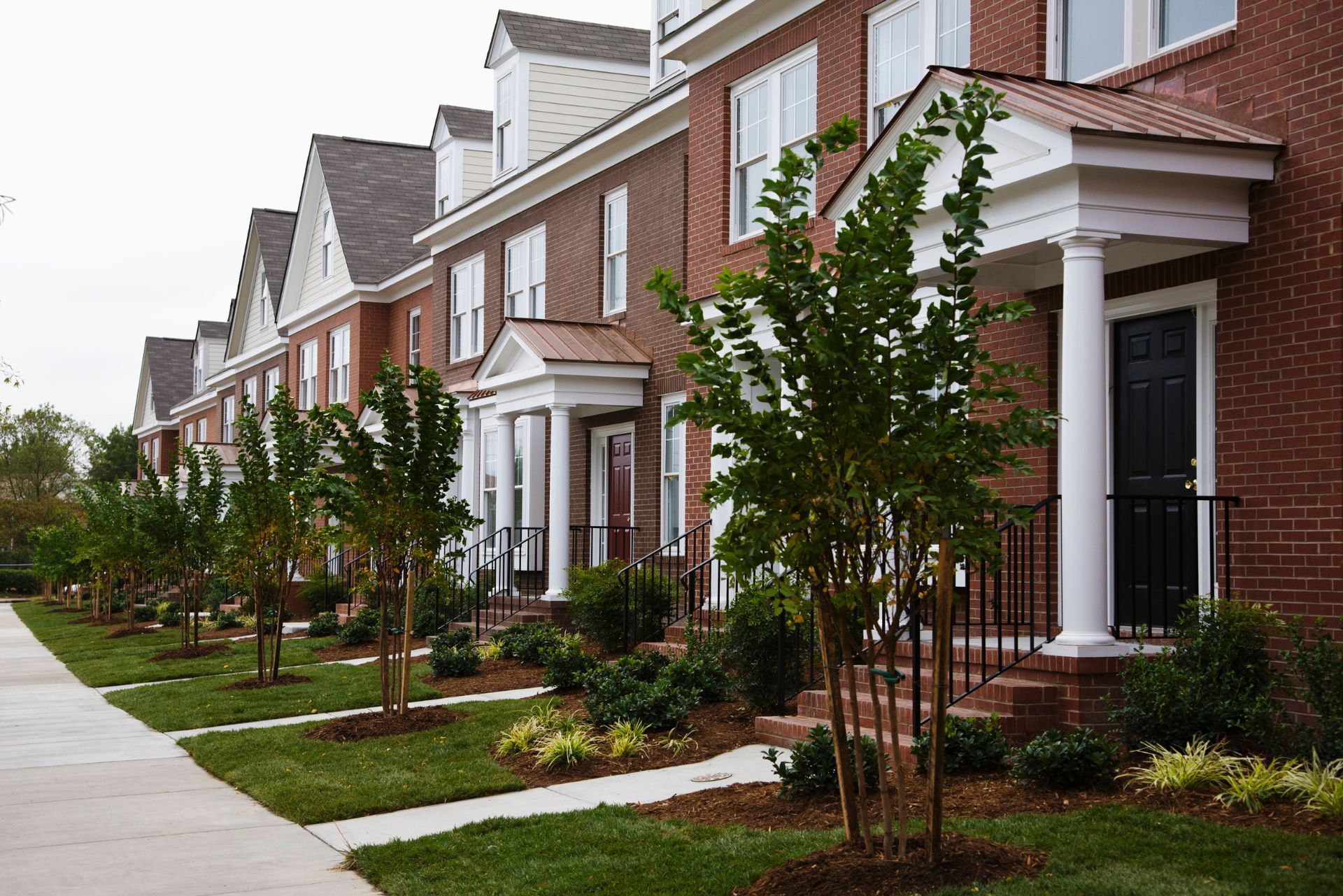Minnesota Multifamily Rental Insurance

See How We're Different
or call us: (763) 242-1668
Common Business Insurance Policies
By: Matt Larsen
Owner of Capstone Insurance Group & Restaurant Insurance Advisor
763-242-1668
Index
Contact Us
For owners and investors in Minnesota’s multifamily rental market, understanding the evolving landscape of property insurance is crucial. Over recent years, insurance premiums have surged dramatically, reshaping the economics of owning and operating multifamily properties. This article dives deep into the current trends, challenges, and strategies related to multifamily rental insurance in Minnesota, helping property owners navigate this complex environment with confidence.
Rising
insurance costs are not just a local issue—they reflect broader national trends impacting multifamily housing affordability and financial viability. According to a detailed analysis by the
Federal Reserve Bank of Minneapolis, property insurance premiums for multifamily housing owners in Minnesota and neighboring states have increased significantly year over year, putting pressure on owners to adapt quickly.
The Surge in Multifamily Insurance Premiums: What’s Driving It?
Between 2021 and 2024, multifamily property insurance premiums in Minnesota, Montana, North Dakota, and South Dakota rose by an average of 14% in 2021–2022, 22% in 2022–2023, and a staggering 45% in 2023–2024. This sharp escalation is reshaping how owners budget for insurance and manage risk.
Several factors contribute to this surge. One key driver is insurers’ growing perception of risk associated with older buildings. Many rental properties in Greater Minnesota were built before 1970—about 40% of them, according to the Minnesota Housing Partnership. These older properties often have outdated electrical, plumbing, and fire safety systems, making them more vulnerable to claims and losses.
Ben Horowitz, Senior Policy Analyst at the Federal Reserve Bank of Minneapolis, explains that insurers view these aging buildings as higher risk, which translates into higher premiums or even difficulty obtaining coverage. This trend has led to a cautious approach from insurance companies, especially in the Twin Cities metro area, where they increasingly prefer to insure newer, high-quality, and lower-risk multifamily assets.
The Impact of Building Age and Condition
Older multifamily buildings often face challenges beyond just insurance costs. They may require costly upgrades to meet current building codes or insurance underwriting standards. This creates a feedback loop where higher premiums make it harder to justify investments, but without upgrades, insurance costs remain elevated or coverage becomes unavailable.
Nick Stageberg, Principal at Black Swan Real Estate, highlights that many buildings today are “somewhat uninsurable,” which complicates financing and refinancing efforts. Lenders typically require adequate insurance coverage as a condition for loans, so properties with limited insurance options face significant hurdles in accessing capital. The implications extend to property values as well; buildings perceived as high-risk may see their market value decrease, further complicating the financial landscape for owners.
Moreover, the rising premiums are not solely a reflection of property age but also of broader environmental concerns. Increased frequency and severity of natural disasters, such as floods and wildfires, have led insurers to reassess their risk models. As climate change continues to impact weather patterns, properties in regions previously considered low-risk may now face heightened scrutiny. This shift places additional pressure on multifamily property owners to not only upgrade their buildings but also to adopt more resilient practices, such as investing in flood defenses or fire-resistant materials, to mitigate risks and potentially lower their insurance costs in the long run.

Financial Strain on Multifamily Housing Owners
The rising cost of insurance is more than just a line item increase; it’s a stressor that affects the entire financial ecosystem of multifamily housing. The Federal Reserve Bank of Minneapolis conducted a survey revealing that these escalating premiums are squeezing the profitability of multifamily rental properties, particularly affordable housing units that operate on thin margins.
Owners are often forced to make difficult decisions: increase rents, reduce maintenance budgets, or accept insurance policies with high deductibles and limited coverage. Many are choosing the latter, accepting greater financial risk to maintain insurance at all. This trend, while understandable, increases vulnerability to large unforeseen losses.
Insurance Costs and the Affordable Housing Crisis
Insurance cost increases exacerbate the already critical affordable housing shortage in Minnesota. Multifamily owners who manage affordable units are less able to pass on costs to tenants due to rent restrictions or market realities. As a result, some properties may face financial distress or be at risk of conversion to market-rate housing, reducing affordable stock.
The National Multifamily Housing Council’s 2024 State of Multifamily Risk Survey underscores this nationwide challenge, noting that insurance cost inflation continues to strain multifamily operations, threatening long-term housing affordability and stability.
Moreover, the impact of rising insurance costs extends beyond just the financial statements of property owners; it also affects the communities they serve. When owners cut back on maintenance due to budget constraints, the quality of living for tenants can decline, leading to increased tenant turnover and dissatisfaction. This cycle can create a negative feedback loop, where the perceived value of the property diminishes, further complicating the financial viability of maintaining affordable housing. Additionally, as properties transition to market-rate housing, the community loses vital resources that once provided stability and support for lower-income families.
In response to these challenges, some multifamily housing owners are exploring innovative solutions, such as forming cooperatives or joining forces with local governments to create insurance pools that can help mitigate costs. These collaborations not only aim to reduce premiums but also foster a sense of community ownership and responsibility among residents. By working together, stakeholders can address the multifaceted issues surrounding insurance costs while striving to maintain the integrity and availability of affordable housing options in their neighborhoods.
Insurance Market Trends: What Owners Need to Know
Insurance companies are adapting their underwriting strategies in response to the increased risks and claims environment. In the Twin Cities metro, insurers are selectively focusing on newer, higher-quality multifamily properties, which they consider lower risk. This shift means that older or less well-maintained buildings may face increasingly limited insurance options or higher premiums. The implications of this trend extend beyond just insurance costs; they may also influence property values and the overall market dynamics in the region.
Michel Commercial Real Estate reports that this cautious stance by insurers is making newer multifamily developments more attractive to investors—not only because of modern amenities and energy efficiency but also due to more favorable insurance terms. This trend may influence future development patterns and investment decisions in Minnesota’s multifamily sector. As investors gravitate towards these newer properties, we may see a ripple effect that encourages property owners to invest in renovations or upgrades to older buildings, thereby improving their insurability and marketability.
High Deductibles and Limited Coverage: A Risky Trade-Off
To retain insurance coverage, many multifamily housing owners are accepting policies with large deductibles or gaps in coverage. While this approach keeps premiums somewhat manageable, it transfers more financial risk to property owners. In the event of a major loss, these deductibles and coverage gaps could result in significant out-of-pocket expenses. This precarious balance between affordability and adequate protection is a growing concern for multifamily owners who may find themselves financially vulnerable in the face of unforeseen events.
Owners must carefully evaluate their risk tolerance and consider whether accepting these terms is sustainable over the long term. Consulting with insurance brokers who specialize in multifamily properties can help identify the best available options and potential risk mitigation strategies. Additionally, owners should stay informed about emerging risks, such as climate change impacts or shifts in local regulations, which could further complicate the insurance landscape. By proactively addressing these challenges, property owners can better position themselves to navigate the evolving market and safeguard their investments.
Strategies for Managing Rising Insurance Costs
Given the upward trajectory of insurance premiums, multifamily property owners in Minnesota need proactive strategies to manage costs and maintain coverage. Here are several approaches gaining traction:
1. Investing in Property Upgrades
Upgrading older buildings to meet modern safety and building code standards can reduce perceived risk and help lower insurance premiums. Improvements such as updated electrical systems, fire suppression equipment, and roof repairs not only protect tenants but also make properties more attractive to insurers. Additionally, energy-efficient upgrades, like installing Energy Star-rated windows and appliances, can lead to lower utility costs and may qualify for various rebates or tax incentives, further enhancing the financial viability of these improvements.
2. Risk Management and Loss Prevention
Implementing robust risk management programs—like regular maintenance, tenant education, and enhanced security measures—can reduce claims frequency and severity. Insurance providers often reward proactive loss prevention efforts with more favorable terms. Furthermore, establishing a clear communication channel with tenants about safety protocols and emergency procedures can foster a culture of safety, which not only protects the property but also builds a sense of community among residents. Regular safety drills and workshops can empower tenants, making them active participants in maintaining a secure living environment.
3. Exploring Alternative Insurance Markets
Some owners are turning to specialty insurers or captive insurance arrangements to secure coverage when traditional markets become restrictive. While these options may require more complex arrangements, they can provide tailored solutions for challenging properties. Moreover, exploring group purchasing options with other property owners can lead to bulk discounts and better terms, as pooling risk among multiple entities often results in lower premiums. This collaborative approach not only enhances bargaining power but also fosters a network of support among property owners facing similar challenges.
4. Collaborating with Industry Experts
Working with insurance brokers, risk consultants, and legal advisors who understand the nuances of multifamily insurance in Minnesota can uncover innovative solutions and ensure compliance with lender requirements. These experts can provide valuable insights into emerging trends and legislative changes that may impact insurance costs. Additionally, engaging with local real estate associations can offer networking opportunities and access to shared resources, such as best practices and case studies, which can further enhance a property owner's ability to navigate the complexities of insurance in a rapidly evolving market.

Looking Ahead: The Future of Multifamily Insurance in Minnesota
The multifamily rental market in Minnesota is at a crossroads. Rising insurance costs, combined with aging building stock and evolving insurer risk appetites, are reshaping the landscape for property owners. While challenges are significant, they also present opportunities for innovation and strategic investment.
Owners who stay informed about market trends, invest in property improvements, and engage with knowledgeable insurance professionals will be better positioned to navigate this complex environment. The ongoing dialogue between insurers, owners, policymakers, and housing advocates will also be critical to ensuring that multifamily housing remains viable and affordable for Minnesota’s residents.
As the insurance landscape evolves, property owners may find that embracing technology can play a pivotal role in mitigating risks and managing costs. For example, implementing smart building technologies can enhance safety and efficiency, potentially lowering insurance premiums. Additionally, adopting comprehensive risk management strategies, such as regular property assessments and maintenance schedules, can help owners demonstrate their commitment to minimizing hazards, which may appeal to insurers looking for lower-risk clients.
Moreover, the demographic shifts in Minnesota, including an influx of younger renters and a growing emphasis on sustainability, are influencing the types of properties that are in demand. Multifamily housing that incorporates green building practices and energy-efficient systems not only attracts environmentally conscious tenants but may also qualify for favorable insurance rates. By aligning property development with these trends, owners can create a competitive edge while contributing to a more sustainable future.
For those interested in the detailed data and expert insights behind these trends, the
Federal Reserve Bank of Minneapolis and Minnesota Housing Partnership provide valuable resources and analysis on this evolving issue.





